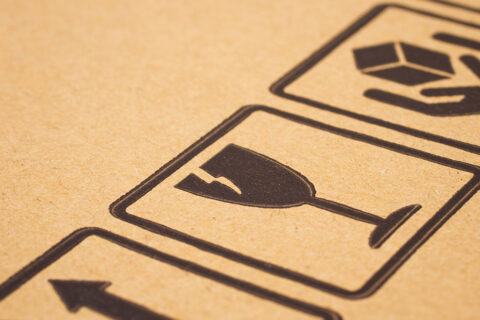Pianos are one of the most commonly moved large instruments. Although many people do it, piano moving requires unique planning and finesse. All too often, people assume they can move a piano as easily as any other large item.
Unfortunately, pianos present several unique risks. So you can prevent harm to you or your piano, we’ve created a list of specific mistakes to avoid. By steering clear of these common pitfalls, you can achieve a safe move.
1. Underestimating Weight
If your item is too large to put on the bathroom scale, contact the manufacturer to determine its weight. Most pianos have a manufacturer’s label that should give you a clue of who to contact for this information.
Below is a basic list of piano lengths and corresponding weights:
Upright Pianos
- 48-60 inches high: 500-800 lbs.
- Less than 48 inches high: 300-400 lbs.
Grand Pianos
- 5 feet long: 500 lbs.
- 6 feet long: 600 lbs.
- 9 feet concert grand: 1,000-1,200 lbs.
When it comes time to move your piano, inform the movers of its particular weight. To prevent injury, learn about your piano’s weight distribution too. A piano’s appearance does not necessarily yield accurate knowledge of which parts are heaviest.
Pianos exceeding 48 inches in height or 6 feet in length definitely call for professional help. The sheer weight of a piano requires all possible help, which leads to the next most common mistake:
2. Failing to Recruit Adequate Help
Even smaller upright pianos require at least three adults to do the heavy lifting. No matter what type of piano you own, make sure that you have the necessary help.
Consider hiring professional movers to complete the task. This ensures the safety of your item and those moving it, as professional movers are knowledgeable and experienced.
3. Relying on Casters for Movement
Casters are the small, wheeled contraptions on the bottom of most piano legs. These devices are more decorative than functional. Even at factory new, casters aren’t equipped to support the full weight of a piano. And as pianos sit, their casters deteriorate. After sitting for an extended period, casters will jam when rolled and damage hardwood floors and carpets.
Avoid moving a piano on its casters. Instead, take the piano legs off, and use a four-wheel piano dolly to move the main body of the instrument.
4. Using Improper Moving Equipment
Having the “proper” equipment applies to packing materials as well as any tools you may use for the actual transport of your piano. Don’t assume that a standard dolly or similar device will work fine for moving a piano. Unless you use the prescribed four-wheel piano dolly, you may likely cause damage to your piano and the floor beneath it.
Invest in the necessary piano padding and straps as well. Only after you have all these tools at your disposal can you proceed to move your piano. If you seek the help of professional movers, they should have the required equipment available.
5. Protecting Only the Piano
Pianos often sit among valuable items and carpet. People may forget that expensive flooring and décor need protection, too. Take measures to protect all your treasures from harm with wall padding and floor shields.
6. Leaving Too Little Time
All too often, people don’t leave enough time for their move. This is especially dangerous when moving large items. You never want to be in a rush when moving a piano. Plan ahead so you can avoid mistakes when moving your piano.

